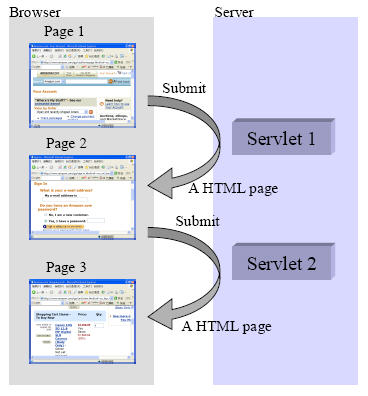Aimed at simply and effectively exchanging documents Web technologies such as, HTTP and HTML are originated from the page-based stateless-communication model. In this model a page is self-contained and is a minimal unit that communicates between clients and servers.

Since the Web has emerged as the default platform for application development this model faces a substantial challenge: the inability to visually represent the complexities in today's applications. For example, to give a customer a quotation, you might have to open another page to search his trading records, another page for the recent prices, and another page for current stocking. Users are forced to leave the page they are working in, and navigate among several pages. It is easy to get lost and confused resulting in unhappy customers, lost sales and low productivities.
The challenge to develop a modern application upon this page-based model is also substantial. In this model, applications running at the server have to take care of everything: from parsing the request, rendering the response, routing processes that link users from one page to another, and handling versatile errors made by users. Many different frameworks such as: Struts, Tapestry and JSF have emerged to simplify this development process. Due to the huge gap between the page-based model and modern applications learning and using these frameworks is never a pleasant process, not to mention intuitive or simplistic.